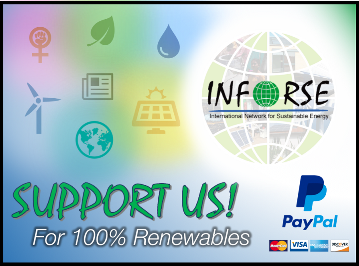|
|
|
|
|
|
|
|
|
|
|
|
|
|
|
|
|
|
|
|
|
| Follow Us: |
| New Low-Energy Greenhouse Concept | |
| Half of the energy consumption of conventional greenhouses in Denmark. Energy consumption competitive with that of producing imported open-land fruit. | |
| Economically Feasible | |
| Commercial greenhouse products in the northern hemisphere is highly energy-intensive. Their energy index, showing the ratio between production value and energy consumption, is 2350, while that of average industrial products have a value of 50. One kg of tomatoes or cucumbers consumes 13 kWh, which corresponds to more than its own weight in oil. In attempt to reduce this, the Organic Agriculture Council of the Danish Ministry of Agriculture gave support to the development of a commercial low-energy greenhouse. It seems likely that, in the long run, the practice of growing organic fruit in greenhouses with an unlimited consumption of fossil fuel will no longer be possible. Therefore, it is important to have alternative solutions ready even if they are more expensive, which is the case of the low-energy greenhouse. On the other hand, it is possible to obtain a higher price for organic products. In Denmark, it is also possible to get economic governmental support from the CO2- Fund (fund from CO2 tax revenue) for part of the construction costs of a new low-energy greenhouse. All in all, our calculations indicate that the concept is economically feasible. | |
| Wind Instead of Oil | |
| Energy input is required in traditional greenhouses for heating. This need is covered by fossil fuel in the form of heavy fuel oil. The low-energy greenhouse, however, uses electricity generated by a wind turbine. | |
| Mobile Insulation, Heat Pump | |
| The two main technologies used are mobile insulation, for reduction of heat losses and for shading, and dehumidification by a heat pump. Insulation of the glass roof during the nights reduces the loss of heat via the roof by a factor of 17 (from 4 to 0,23 W/m2 oC) and, for the whole building, by a factor of 3,7 (from 4,4 to 1,2 W/m2 oC). The low-energy house does not use heat pipes, oil burner, boiler, or chimney. Instead, it is heated by solar radiation, artificial light, and the waste heat from the heat pump. Since the heat losses from the house are small, most of the heat derived from the artificial light and from the heat pump can be recovered and used elsewhere. Dehumidifying via heat pump means that windows need not be opened for ventilation in the wintertime, which removes another possible avenue of heat loss. Another advantage of using heat pumps is that a certain amount of excess heat can be exported out of the greenhouse and used to heat packing facilities, private residences, or other greenhouses, or it can be sold to a local district heating grid. Fig. 2 shows wind electricity consumption in a low-energy greenhouse with 0 to 160 W/m2 installed artificial light, compared to fossil fuel used in a traditional greenhouse or in the transport of open-land fruit from Southern Europe to Denmark. Series 1 shows energy consumption and series 2 shows wind electricity consumption minus exported heat. | |
| More information: | |
| Folkecenter for Renewable Energy, Kammersgaardsvej 16, Sdr. Ydby, 7760, Hurup, Thy, Denmark. Ph:+45-97956600, fax:+45-97956565, e-mail: larsydefcenergy@www.nvn.dk | |

| |
| Published in Sustainable Energy News |
|
|
Go back to main page of ISSUE #20 Sustainable Energy News (16 pages) (1998-02-01) |
|
| Contact | |
| |
INFORSE Secretariat Klosterport 4F, 1. floor DK-8000 Aarhus C Denmark Phone: +45 86 22 70 00 Twitter: INFORSE_org Facebook: INFORSE Web: inforse.org E-mail: ove@inforse.org |
